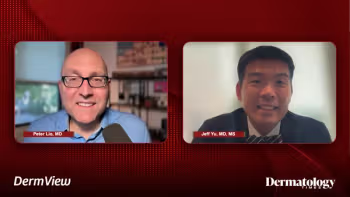
Charity care under pressure
National report - Free or reduced cost medical care for U.S.patients without sufficient financial resources is continuing todecline, further challenging an already stressed safety net in thenation's healthcare system and putting pressure on physiciansacross specialties, including dermatologists.
National report - Free or reduced cost medical care for U.S. patients without sufficient financial resources is continuing to decline, further challenging an already stressed safety net in the nation's healthcare system and putting pressure on physicians across specialties, including dermatologists.
Compound problems
"There's been a decline in the number of doctors in small practices, and there's also a decline in the number of doctors who own their practice," she says. Both of these factors create organizational barriers to in-office charity care.
The American Medical Association (AMA) also reports growing holes in the safety net for the uninsured.
"Physicians are committed to providing charity care and nearly 70 percent of physicians provide uncompensated care worth more than $2,000 every week, despite increasing time and financial pressures," writes Edward Hill, president of the AMA, in a recent statement. "Charity care is not the solution for the 46 million Americans who are uninsured."
Underscoring this position, in a 2005 AMA member survey, physicians providing charity care reported significant financial obstacles facing both the doctor and the patient, including filling prescriptions, securing diagnostic tests and procedures, follow-up care and referrals.
Furthermore, the AMA projects that the 2007 Medicare cuts to physician payment will be detrimental to seniors who depend on the program for medical care. The AMA reports that nearly half of members surveyed plan to reduce or stop accepting new Medicare patients once the cuts go into effect.
Volunteerism in dermatology
Similar to the HSC findings, the American Academy of Dermatology (AAD) has not detected a decrease in the overall number of dermatologists that volunteer medical services or their time for community projects.
For example, Ann Haas, M.D., of the AAD Volunteerism Committee, says the number of physicians that do skin cancer screenings has not declined in the past decade. However, she concedes, the same physicians usually participate every year.
Charles Fixler, M.D., who has been coordinating skin cancer screenings in Cincinnati, Ohio, for 20 years, agrees.
"Twenty-nine out of the thirty-five dermatologists that practice in Cincinnati volunteer for the annual screenings year after year," Dr. Fixler says. "The few that are not participating, never have."
The challenge faced by Cincinnati with regard to dermatologic charity care, Dr. Fixler says, is that the number of dermatologists in the city is currently stagnant.
"The residents who go through training here are now leaving after graduation," Dr. Fixler reports. "They are often attracted to a lifestyle offered by the coast, and compensation associated with cosmetic services. Our professional pool isn't being replenished."
Residents, according to Dr. Haas, are a new focus for the Volunteerism Committee, which is interested in helping emerging professionals carve out time for charitable activities.
"Dermatologists are busy," she says. "Taking a half day out of the office is something that takes a great deal of planning. There are also economic consequences to consider, depending on the structure of the practice that you're in. It's a real challenge that we can help residents prepare for."
Although the AAD does not have readily compiled data regarding volunteerism for past years, the information gathered shows that charity work among dermatologists is highly varied, with charity care for Americans comprising just a portion of activities. Dermatologists are recognized for community education, public healthcare initiatives, international medical missions and more.
Newsletter
Like what you’re reading? Subscribe to Dermatology Times for weekly updates on therapies, innovations, and real-world practice tips.


















